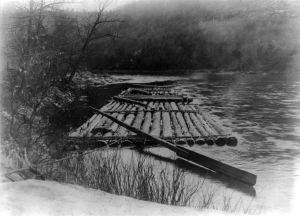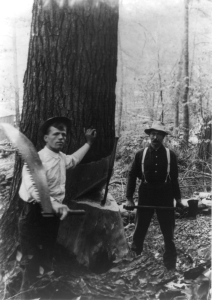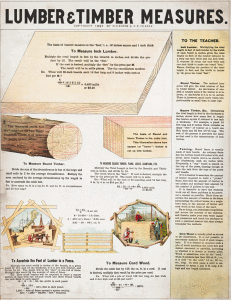


Lumberland, 1825–1831
“Lumbering was the only business of the section, cutting and drawing logs, sawing and hauling boards, rafting and running lumber down the stream.”—Johnston, p. 293.
Lumberland hummed with the sound of sawmill blades as they ripped through huge logs to make planks.
Not all of the timber from the area went to local sawmills.
A considerable amount of logs sent to the Delaware River by way of the nearest stream were made into rafts and floated to market.
Lumbermen and farmers lived in simple, small homes with no insulation. Barns usually stood across the road from the houses.
Lumbermen also farmed, and their oxen were used for both occupations.
Vegetables, rye, corn, buckwheat, and some fruit trees were grown, as well as grain and hay for the stock.
Meat and milk came from the cattle, which were free to roam. Chickens provided both meat and eggs.—The Mill on Halfway Brook, Chapter 3.







